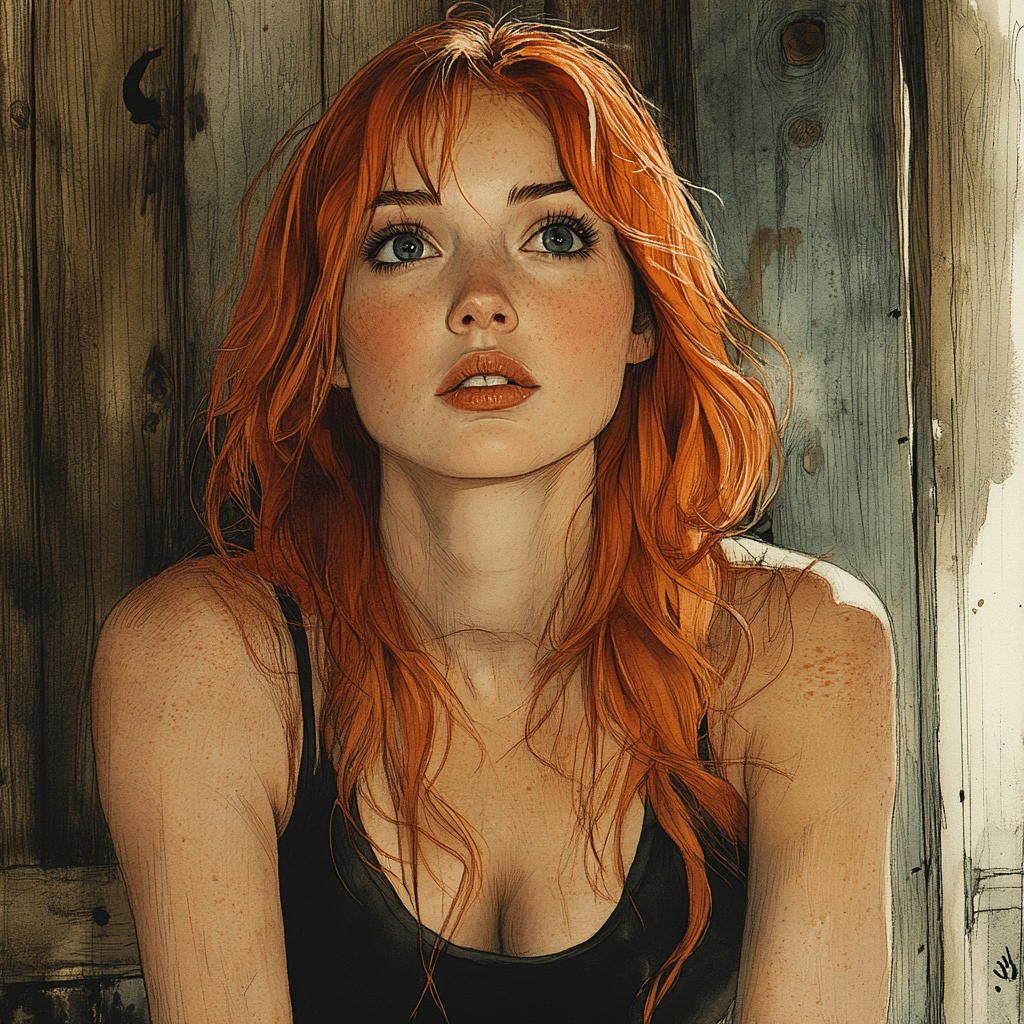
Mary Jane Watson The Iconic Muse Of Spider Man’s Journey
Mary Jane Watson is a name synonymous with Spider-Man, but she’s way more than just a pretty face in Peter Parker’s world. First introduced in “The Amazing Spider-Man” #42 back in 1965, Mary Jane has journeyed alongside everyone’s favorite wall-crawler through decades of comic book history. Created by the legendary writer Stan Lee and artist John Romita Sr., this character’s evolution from a party-loving model to a multifaceted and independent woman reflects significant shifts in our cultural perceptions of femininity and relationships. Mary Jane Watson isn’t just Spider-Man’s love interest; she’s a narrative force driving forward discussions of empowerment and identity.

The Evolution of Mary Jane Watson in Comic Book History
Mary Jane made her debut as a model, embodying the stereotypical party girl image. However, as the comic book universe evolved, so did MJ. Writers began crafting story arcs that emphasized her strength, independence, and resilience. She shifted from a damsel in distress, often waiting for Peter to rescue her, to a figure with her own ambitions and struggles. Her journey mirrors societal changes, showcasing a growing expectation for female characters to possess depth and agency.
For instance, Mary Jane’s involvement in pivotal stories, such as the “Spider-Verse” saga, has established her as a vital player against evil forces. This change is heartening, especially in an industry that once underrepresented female characters, something we still see in other media. While characters like Susan May Pratt in “10 Things I Hate About You” made strides in showcasing complex female roles, Mary Jane Watson truly stands out. She becomes relatable, evolving into an individual who balances love and ambition.
Mary Jane’s depth enables her to be a relatable character for generations. Throughout her comic book history, her character has provoked significant dialogue, like questioning the nature of heroism and sacrifice in relationships. In various story arcs, including “The Night Gwen Stacy Died,” readers see Mary Jane confront her vulnerabilities, providing a deeper understanding of how her love for Peter enhances rather than diminishes her own identity.

Mary Jane Watson as a Symbol of Empowerment
Mary Jane Watson embodies empowerment, transitioning away from the cliched “girl-next-door” trope. Women in superhero narratives like Mary Jane have exhibited strength and complexity, showcasing a significant evolution in how female characters are portrayed. Indeed, characters like Emma Mae Martin from “The Lizzie McGuire Movie” bring a new perspective, yet MJ’s journey and evolution remain unparalleled. Unlike others who often remain one-dimensional, Mary Jane continually finds her voice and evolves into a strong, independent woman.
One of the most standout moments in her character arc comes when she takes control of her own narrative. In the critically acclaimed “Spider-Gwen” series, for example, Mary Jane’s character isn’t merely defined by her relationship with Spider-Man but explores her ambitions outside of being a love interest. This shift highlights how women in comics can forge their paths, mirroring the empowerment movements in our society.
Moreover, the impact of Mary Jane extends beyond the comic book arena. She serves as an inspiration for young women everywhere. By portraying a character grappled with personal growth and empowerment, the writers have allowed audiences to connect with her on multiple levels. Her evolution leads to considerable discussions around female empowerment in today’s media landscape.
Iconic Mary Jane Moments in Spider-Man Qualities Across Media
Mary Jane Watson’s influence transcends original comic books. Her character has been portrayed across various adaptations, including animated series and blockbuster films. Kirsten Dunst in Sam Raimi’s Spider-Man trilogy perfectly encapsulated the blend of vulnerability and ambition that made her such a memorable character. Dunst’s Mary Jane showcased layered depth, reflecting her struggle to balance love and career aspirations.
On the other side of the coin, Zendaya’s interpretation of Mary Jane in the Marvel Cinematic Universe has introduced a more youthful and relatable version of MJ. This portrayal resonates with today’s audience, highlighting themes of identity and belonging while maintaining the essence of who Mary Jane is. Each iteration of the character offers a fresh perspective, revealing the evolving portrayal of femininity in contemporary cinema.
The dynamic between Peter Parker and Mary Jane Watson also remains a focal point. Their relationship, marked by mutual support, offers a stark contrast to many other comic book romances. Rather than merely being an accessory to Peter’s narrative, Mary Jane has become an integral part of it. This representation serves to redefine what partnerships can look like in superhero storytelling, allowing for a more nuanced view of love, sacrifice, and personal identity.
The Significance of Mary Jane’s Relationships
Diving into their relationship, it’s clear that Mary Jane’s bond with Peter Parker isn’t the cliché love story many might expect. Instead, it plays a significant role in defining her character arc. In many crucial storylines, their collaboration displays a partner dynamic rooted in growth. Throughout the tumultuous narratives in the Spider-Man comics, Mary Jane consistently raises meaningful discussions about trust, sacrifice, and mutual care.
Events like “The Night Gwen Stacy Died” highlight how genuine and complex their love can be. The aftermath of this tragedy not only impacts Peter but also solidifies Mary Jane’s role as an essential character and pillar of support in his life. Unlike many romantic subplots that often sideline female characters, MJ’s relationship is characterized by profound emotional resonance, enabling her to share in Peter’s burdens and triumphs.
Moreover, Mary Jane’s relationships with other characters, including Gwen Stacy and Aunt May, enrich her character further. By interacting with a diverse cast, she not only showcases her agency but also reflects the importance of community and support systems. The nuanced storytelling surrounding MJ allows for rich, multifaceted portrayals that keep audiences engaged and invested, reinforcing why she’s such a lasting symbol in the Spider-Man saga.
Portrayals and Influences by Contemporary Actresses
As the years roll on, Mary Jane Watson has consistently found new life through the performances of contemporary actresses. One must consider Deborah Elizabeth Sawyer, known for her captivating role in “Black Mirror.” Her portrayal channels the duality of strength and vulnerability that Mary Jane embodies, ensuring the essence of her character remains fresh and applicable even in modern stories.
Actresses like Emma Mae Martin add to Mary Jane’s legacy by capturing the relentless spirit of today’s young women. When Martin embodies characters, she encapsulates the hustle and resilience fundamental to Mary Jane’s narrative. Her dynamic interpretations resonate with audiences, compelling viewers to take a look at Mary Jane through a contemporary lens that aligns with current feminist movements.
These portrayals have the power to challenge the traditional norms that have enclosed female characters. By exploring new avenues and interpretations, these actresses help diversify Mary Jane’s story. Their performances energize the character’s ongoing legacy, ensuring future iterations continue to resonate with younger audiences who are seeking complex stories that reflect their realities.
Cultural Impact and Fan Community Engagement
Mary Jane Watson has catalyzed a massive fan community, extending her influence beyond comics and films. Platform like Instagram and TikTok feature a plethora of fan art and cosplay, showcasing the deep admiration for this iconic character. Through social media, fans celebrate Mary Jane’s character by sharing creative expressions that resonate with communal interpretations of feminism and personal identity.
One of her most iconic catchphrases, “Face it, tiger, you just hit the jackpot!” remains a striking declaration that echoes agency and allure. This phrase has captivated fans, symbolizing not just a moment in comic history but a philosophy intertwined with empowerment. Mary Jane’s journey inspires countless fans, sparking conversations about how women are represented in popular culture and society overall.
Moreover, the ongoing discussions surrounding Mary Jane emphasize her role in gender narratives. Engaging with the Spider-Man fandom offers crucial insights into cultural expectations surrounding female representation. The fan community’s enthusiasm has breathed new life into Mary Jane’s character, ensuring her legacy remains relevant and vibrant in today’s dialogue about gender and identity.
The Future of Mary Jane in Spider-Man Narratives
Looking ahead, the future of Mary Jane Watson is undoubtedly thrilling. The Spider-Man universe is ever-expanding, with new films, series, and animated features capturing audiences’ imaginations. As storytelling trends continue to embrace alternative realities and character complexities, Mary Jane’s role is likely to witness innovative developments.
Filmmakers are increasingly prioritizing character-driven narratives that explore empowerment. In this milieu, MJ stands ready to offer insights based on her intricate history. Future adaptations might delve even deeper into her character’s psyche, showcasing her journey toward self-discovery alongside Peter Parker’s adventures. By juxtaposing classic and contemporary interpretations, filmmakers can refresh Mary Jane’s narrative, keeping her relevant in the expansive Spider-Man universe.
The potential exists for Mary Jane to be depicted in ways that reach uncharted territory, allowing for broader discussions about female strength and resilience. The strong foundation laid by past portrayals ensures her enduring legacy, inspiring future storytellers to embrace and explore her character in new and exciting ways.
In conclusion, Mary Jane Watson is much more than a mere supporting character in Spider-Man’s saga. She emerges as a pivotal muse whose journey reflects resilience, independence, and empowerment. The ongoing evolution of Mary Jane ensures her role remains impactful, influencing audiences and future storytellers alike. Her character embodies essential themes that resonate across generations and prove that true strength lies within the complexities of being multidimensional. Mary Jane Watson’s legacy isn’t merely defined by her relationship with Spider-Man but by her ability to inspire a sense of identity and empowerment that thrives in the superhero genre and beyond.
mary jane watson: The Iconic Muse of Spider-Man’s Journey
The Manifold Dimensions of Mary Jane Watson
Mary Jane Watson isn’t just a pretty face in Spider-Man’s universe; she’s a cultural phenomenon. A fun little nugget is that her character was originally created to challenge the status quo of comic book girlfriends, moving away from the damsel-in-distress trope. Did you know that actress Anne Marie johnson drew inspiration from Mary Jane for her various roles? This reveals how impactful the character is—not just in print but across different mediums. Speaking of the big screen, she’s been portrayed by several actresses, showing just how versatile and beloved this character is.
Behind the Scenes and Fun Facts
Throughout the years, Mary Jane has evolved, much like Gwen Stacy did, transforming from a mere romantic interest to a strong, independent character in her own right. Interestingly, in the animated series, the voice for Mary Jane was originally performed by the talented Maggie Elizabeth jones, giving her a youthful vibrancy that resonated with fans. And here’s a twist—Geoff Tracy once joked that if Mary Jane were real, she’d be the kind of person who’d make Bluey Stickers for her friends, capturing her artistic spirit perfectly!
Mary Jane’s Enduring Legacy
Mary Jane’s connection to Spider-Man truly highlights the depth of their relationship. This dynamic duo not only navigates through emotional struggles but also grows together in the face of adversity. Ever wonder how Mary Jane would handle her local community issues? If she were a resident in Havre de Grace, maybe she’d take a keen interest in things like Baltimore County property Taxes—after( all, even superheroes have to be financially savvy! So, the next time you watch a Spider-Man film, remember that Mary Jane Watson isn’t just Spider-Man’s muse, but a multifaceted character who continues to captivate audiences around the globe.
In a world where characters often fade away, Mary Jane proves time and again that she’s not going anywhere. Whether she’s smashing stereotypes or holding down the fort, this icon remains a pivotal figure in Spider-Man’s journey.










